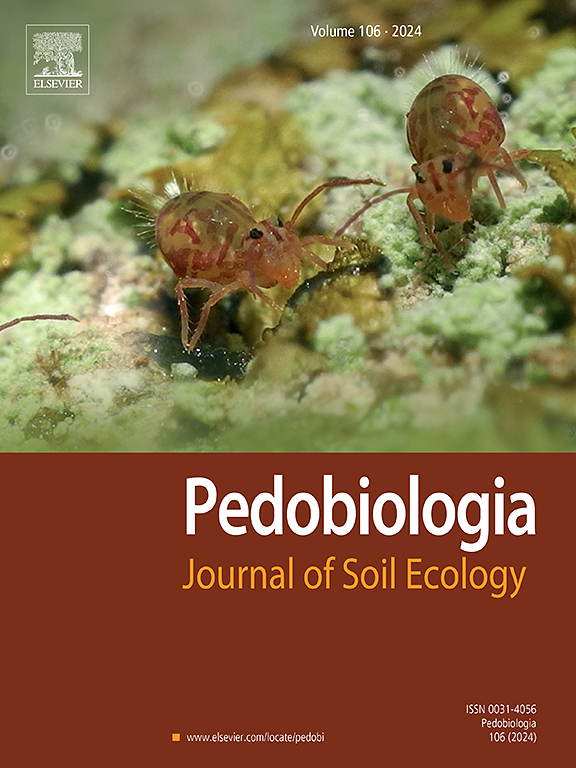Communicating about soil biodiversity: Insights from science editorials and future recommendations
IF 2.2
3区 农林科学
Q3 ECOLOGY
引用次数: 0
Abstract
Given the urgency of the global soil degradation crisis, soil scientists must communicate the importance of soil as being part of nature and the critical need for conserving soil biodiversity. Drawing on a thematic analysis of editorials related to soil conservation and management, we analyzed common themes, key messages, and frames that authors used to advocate for change. Soil biodiversity was referred to in 8 of the 11 editorials, but it was less emphasized and discussed in less detail than messages centered around food production, water resources, and climate change. Editorials structured arguments around economic development, scientific and technical uncertainty, and morality and ethics. We believe future editorials should apply other persuasive frames including social progress, public accountability, and working-towards-compromise when advocating for soil biodiversity conservation. Soil ecologists can improve communications about soil biodiversity by (1) identifying an audience and selecting relevant key messages, (2) strategically applying a persuasive frame, and (3) amplifying diverse voices with a consistent message. We provide a guide for developing essays that encourages soil ecologists to shape discourse, advance policy priorities, and enable non-soil ecologists to communicate about soil biodiversity conservation.
宣传土壤生物多样性:科学社论的启示和未来建议
鉴于全球土壤退化危机的紧迫性,土壤科学家必须宣传土壤作为自然一部分的重要性以及保护土壤生物多样性的迫切需要。通过对与土壤保护和管理相关的社论进行主题分析,我们分析了作者用来倡导变革的共同主题、关键信息和框架。在 11 篇社论中,有 8 篇提到了土壤生物多样性,但与围绕粮食生产、水资源和气候变化的信息相比,对土壤生物多样性的强调和讨论都较少。社论围绕经济发展、科学和技术的不确定性以及道德和伦理展开论述。我们认为,在倡导保护土壤生物多样性时,未来的社论应采用其他有说服力的框架,包括社会进步、公共责任和努力妥协。土壤生态学家可以通过以下方法改善有关土壤生物多样性的传播:(1)确定受众并选择相关的关键信息;(2)战略性地应用有说服力的框架;(3)用一致的信息放大不同的声音。我们为撰写论文提供了指南,鼓励土壤生态学家参与讨论、推进政策优先事项,并使非土壤生态学家能够就土壤生物多样性保护进行交流。
本文章由计算机程序翻译,如有差异,请以英文原文为准。
求助全文
约1分钟内获得全文
求助全文
来源期刊

Pedobiologia
环境科学-生态学
CiteScore
4.20
自引率
8.70%
发文量
38
审稿时长
64 days
期刊介绍:
Pedobiologia publishes peer reviewed articles describing original work in the field of soil ecology, which includes the study of soil organisms and their interactions with factors in their biotic and abiotic environments.
Analysis of biological structures, interactions, functions, and processes in soil is fundamental for understanding the dynamical nature of terrestrial ecosystems, a prerequisite for appropriate soil management. The scope of this journal consists of fundamental and applied aspects of soil ecology; key focal points include interactions among organisms in soil, organismal controls on soil processes, causes and consequences of soil biodiversity, and aboveground-belowground interactions.
We publish:
original research that tests clearly defined hypotheses addressing topics of current interest in soil ecology (including studies demonstrating nonsignificant effects);
descriptions of novel methodological approaches, or evaluations of current approaches, that address a clear need in soil ecology research;
innovative syntheses of the soil ecology literature, including metaanalyses, topical in depth reviews and short opinion/perspective pieces, and descriptions of original conceptual frameworks; and
short notes reporting novel observations of ecological significance.
 求助内容:
求助内容: 应助结果提醒方式:
应助结果提醒方式:


